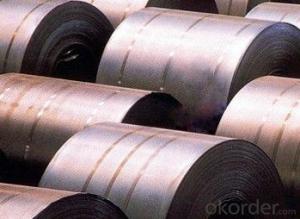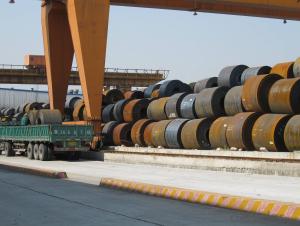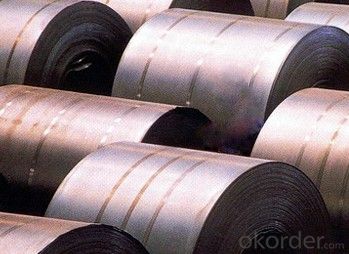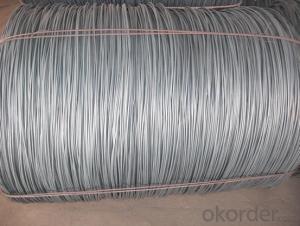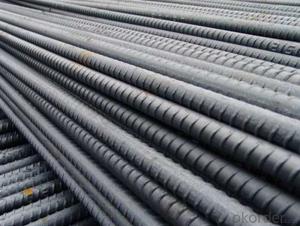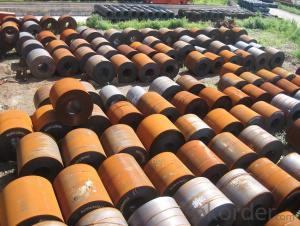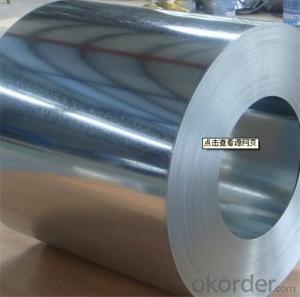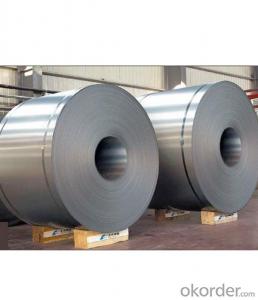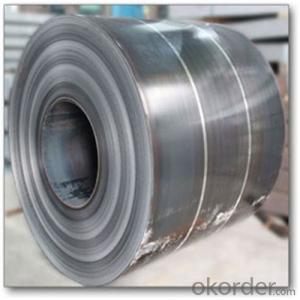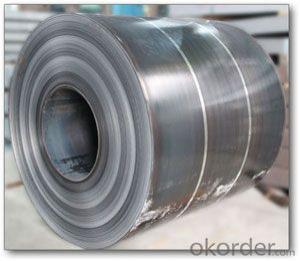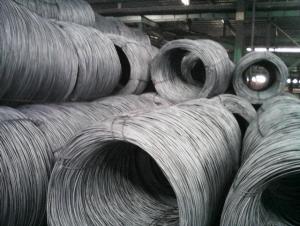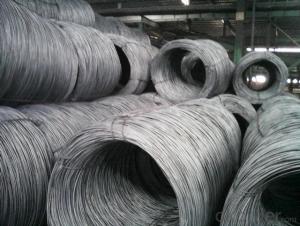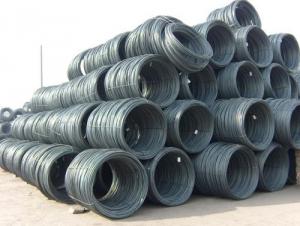Hot rolled steel coil for construction GB Q345B
- Loading Port:
- Tianjin
- Payment Terms:
- TT OR LC
- Min Order Qty:
- 25 m.t.
- Supply Capability:
- 100000 m.t./month
OKorder Service Pledge
OKorder Financial Service
You Might Also Like
Product Description
We are waiting for your email:
1.Description of Prepainted Galvanized Steel Coil and Color Coated Galvanized Steel Coil:
1).uses hot dip galvanized metal strip as the base material
2).zinc layer protection, dope on the zinc layer can cover and protect metal strip from rust
3). color coated sheet is light, beautiful and has good anti-erosion performance
4). can be further processed directly, corrugated or formed etc.
5). life span of PPGI is usually 1.5 times longer than that of galvanized steel coil
6). they are mainly applied for construction, decoration, roofing title, wall panel,
furniture, transportation and other industries
7).as a rich experience manufacturer, we provide quality product, competitive price and reliable after-sales service.
2.Specifications of Prepainted Galvanized Steel Coil and Color Coated Galvanized Steel Coil:
1).usage: home appliance manufacturing, decoration and building, special for manufacturing washing machinery, water heater and refrigerator.
2).grade:SGCC(DX51D-Z),SPCC,SPCD,SPCE
3).paint material: Normal polyester(PE, Epoxy)
4).thickness of top coating:20-25um,Thickness of back coating:7-10um
5).package method: Vertical/Horizontal, full wrapped with anti-moist paper inside, iron sheet wrapped outside, and bundled by iron strips
3.Prepainted Galvanized Steel Coil and Color Coated Galvanized Steel Coil Images:
4.Prepainted Galvanized Steel Coil and Color Coated Galvanized Steel Coil Specification:
Grade | Q195,SPCC,SGCC |
Standard | GB |
Base Plate | cold coil |
Coil ID | 506mm 508mm |
Coil weight | 3-8tons(as required) |
Thickness | 0.2-5.0mm |
Width | 1000mm-1600mm |
Surface processing | galvanized,galvalume,color coating |
Product Feature | good performance, highly precise, high straightness, high evenness and surface finishing, uniform thickness, easy for coating process, high tensile strength, high pressing property and low yield point. |
packing | Standard export packing. or according to customer's requirements. |
Delivery Time | 25 days after received your deposite |
Application | Building material,roofing,household appliance,tube making,construction |
Advantages | 1. Expert:Many years’ experience producing and trading on steel coil, cater to customers’ specific needs |
2. Price:competitive factory price |
5.PACKING:
6.FAQ
We have organized several common questions for our clients,may help you sincerely:
①How about your company?
A world class manufacturer & supplier of castings forging in carbon steel and alloy steel,is one of the large-scale professional investment casting production bases in China,consisting of both casting foundry forging and machining factory. Annually more than 8000 tons Precision casting and forging parts are exported to markets in Europe,America and Japan. OEM casting and forging service available according to customer’s requirement.
②How to guarantee the quality of the products?
We have established the international advanced quality management system,every link from raw material to final product we have strict quality test;We resolutely put an end to unqualified products flowing into the market. At the same time, we will provide necessary follow-up service assurance.
③How long can we receive the product after purchase?
In the purchase of product within three working days, We will arrange the factory delivery as soon as possible. The pecific time of receiving is related to the state and position of customers.Commonly 7 to 10 working days can be served.
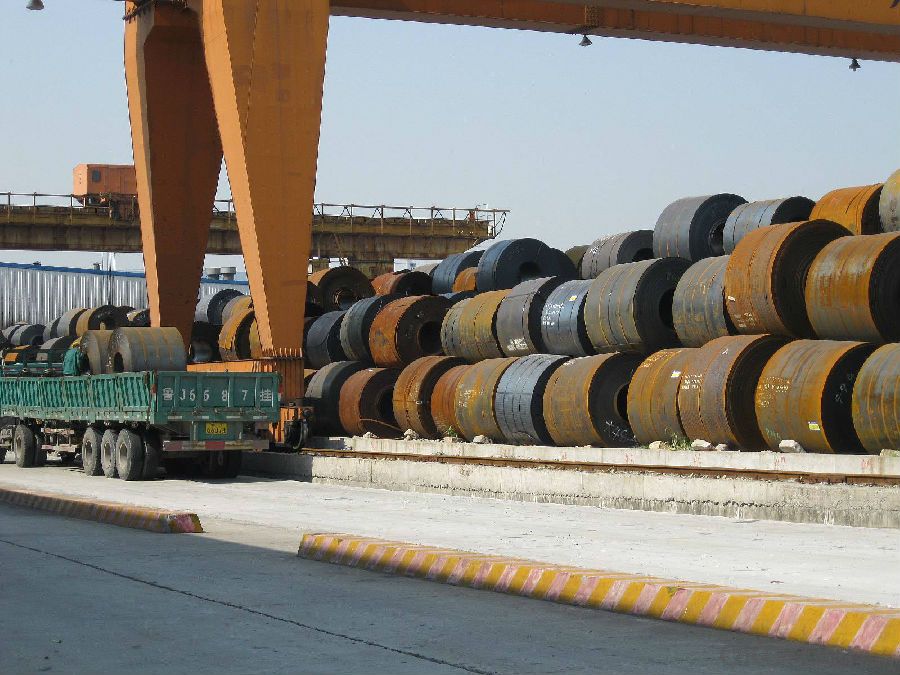
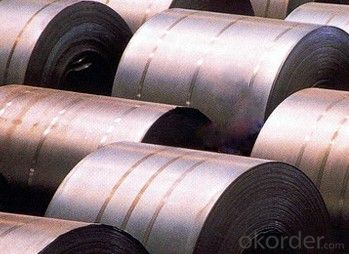
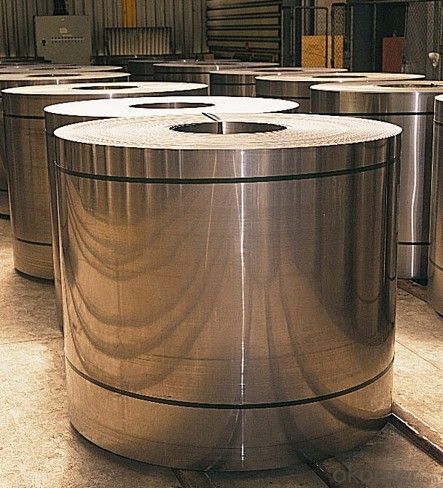
- Q: How are steel wire rods used in the manufacturing of mesh screens for sieving materials?
- Steel wire rods are an essential component in the manufacturing of mesh screens used for sieving materials. These wire rods are typically made from high-quality steel, which provides strength and durability to the final product. The first step in the manufacturing process is to transform the steel wire rods into a specific diameter. This is achieved through a series of drawing processes, where the wire is pulled through a series of progressively smaller dies until it reaches the desired thickness. This process not only reduces the diameter of the wire but also increases its tensile strength. Once the wire rods have been transformed into the desired diameter, they are then woven into a mesh pattern. This is done using specialized weaving machines that interlace the wires in a crisscross pattern, creating a grid-like structure. The spacing between the wires can vary depending on the required mesh size. The mesh screens made from steel wire rods offer numerous benefits in the sieving process. Firstly, their high tensile strength ensures that the screens can withstand heavy loads and resist deformation. This is important as the screens are exposed to constant pressure and vibration during the sieving operation. Moreover, the mesh screens made from steel wire rods have excellent corrosion resistance, making them suitable for a wide range of industrial applications. This resistance to corrosion ensures that the screens can be used in demanding environments without deteriorating over time. Additionally, the precise and consistent openings in the mesh screens allow for accurate and efficient sieving. The size of the mesh can be customized to meet specific requirements, allowing for the separation of particles based on their size and shape. In summary, steel wire rods play a crucial role in the manufacturing of mesh screens for sieving materials. Their strength, durability, and corrosion resistance make them ideal for this application. The resulting mesh screens provide accurate and efficient sieving, ensuring that materials are properly separated based on their size and shape.
- Q: How is steel wire rod used in the production of wire for automotive seat springs?
- Steel wire rod is used in the production of wire for automotive seat springs by being processed through various mechanical and heat treatments to enhance its strength and flexibility. This wire rod is then drawn into thinner wire strands that are coiled and formed into the spring shapes required for automotive seat applications. The high tensile strength of steel wire rod ensures that the seat springs can withstand the weight and pressure exerted on them, providing durability and comfort to the users.
- Q: What are the common standards for steel wire rod?
- The common standards for steel wire rod vary depending on the industry and the specific application. However, there are several widely recognized standards that are commonly followed in the steel wire rod manufacturing industry. One of the most widely accepted standards is the American Society for Testing and Materials (ASTM) standard. ASTM A510/A510M is the standard specification for general requirements for carbon and alloy steel wire rods and coarse round wire. This standard provides the general requirements for steel wire rods in terms of chemical composition, mechanical properties, dimensions, and tolerances. Another common standard is the International Organization for Standardization (ISO) standard. ISO 16120-2 specifies the general requirements for non-alloy steel wire rod for conversion to wire. This standard outlines the chemical composition, mechanical properties, and dimensions of non-alloy steel wire rods. In addition to these standards, there are also industry-specific standards for steel wire rod. For example, the automotive industry has its own set of standards that are followed by manufacturers to ensure the quality and performance of steel wire rods used in automotive applications. Overall, the common standards for steel wire rod include ASTM A510/A510M, ISO 16120-2, and industry-specific standards. These standards ensure that steel wire rods meet the necessary requirements for their intended applications and promote consistency and quality in the manufacturing process.
- Q: What are the main factors affecting the product differentiation of steel wire rod?
- The main factors affecting the product differentiation of steel wire rod are the chemical composition and quality of the steel used, the manufacturing process and technology employed, the size and shape options available, the surface finish and treatment, and any additional features or value-added services provided by the manufacturer.
- Q: What are the common standards for steel wire rod?
- The common standards for steel wire rod vary depending on the industry and the specific application. However, there are several widely recognized standards that are commonly followed in the steel wire rod manufacturing industry. One of the most widely accepted standards is the American Society for Testing and Materials (ASTM) standard. ASTM A510/A510M is the standard specification for general requirements for carbon and alloy steel wire rods and coarse round wire. This standard provides the general requirements for steel wire rods in terms of chemical composition, mechanical properties, dimensions, and tolerances. Another common standard is the International Organization for Standardization (ISO) standard. ISO 16120-2 specifies the general requirements for non-alloy steel wire rod for conversion to wire. This standard outlines the chemical composition, mechanical properties, and dimensions of non-alloy steel wire rods. In addition to these standards, there are also industry-specific standards for steel wire rod. For example, the automotive industry has its own set of standards that are followed by manufacturers to ensure the quality and performance of steel wire rods used in automotive applications. Overall, the common standards for steel wire rod include ASTM A510/A510M, ISO 16120-2, and industry-specific standards. These standards ensure that steel wire rods meet the necessary requirements for their intended applications and promote consistency and quality in the manufacturing process.
- Q: What are the different grades of steel wire rod?
- The different grades of steel wire rod include low carbon, medium carbon, high carbon, and alloy steel wire rods.
- Q: What are the main factors affecting the waste generation of steel wire rod production?
- The main factors affecting the waste generation of steel wire rod production include the quality and composition of raw materials used, the efficiency of production processes and equipment, the level of technological advancement, the skill and expertise of the workforce, and the implementation of waste management strategies and practices. Additionally, factors such as production volume, market demand, and regulatory requirements also play a role in waste generation.
- Q: What are the different types of steel wire rod coatings used for improved electrical conductivity?
- There are several types of steel wire rod coatings used for improved electrical conductivity, including copper, tin, silver, and nickel. These coatings help enhance the wire's ability to conduct electricity by reducing resistance and improving the flow of electrical current.
- Q: How is steel wire rod used in the manufacturing of wire forms for fire protection systems?
- Steel wire rod is an essential component in the manufacturing of wire forms for fire protection systems. These wire forms are used in various fire protection applications, such as sprinkler systems, fire extinguishers, and fire alarm systems. Firstly, steel wire rod is used to produce the wire mesh that is often used as a reinforcement in fire-resistant materials. This wire mesh is incorporated into fire-resistant panels, curtains, or barriers to provide additional strength and stability. It helps to prevent the spread of fire by containing it within a designated area. Additionally, steel wire rod is used to manufacture the wires that are used in fire sprinkler systems. These wires are bent and shaped into specific forms, such as U-shapes or loops, which are then attached to sprinkler heads. The wire forms act as a support system, holding the sprinkler heads in place and ensuring that they are properly positioned to discharge water when triggered by heat or smoke. Moreover, steel wire rod is also utilized in the production of wire forms for fire extinguishers. The wire forms are bent and formed into brackets or handles that securely hold the extinguisher cylinder. These wire forms ensure that the fire extinguisher is easily accessible and can be quickly grabbed in emergency situations. Finally, steel wire rod is used in the manufacturing of wire forms for fire alarm systems. These wire forms are shaped into brackets or clips that securely hold the fire alarm devices, such as smoke detectors or heat sensors, in place. The wire forms ensure that the alarm devices are properly positioned to detect and alert occupants of a potential fire hazard. In summary, steel wire rod plays a crucial role in the manufacturing of wire forms for fire protection systems. It is used to produce wire mesh for fire-resistant materials, wires for sprinkler systems, brackets for fire extinguishers, and clips for fire alarm systems. By utilizing steel wire rod in the production process, fire protection systems are enhanced, ensuring the safety of people and property in case of a fire emergency.
- Q: How is steel wire rod processed into different shapes and sizes?
- Steel wire rod is processed into different shapes and sizes through various manufacturing processes such as hot rolling, cold drawing, and annealing. Initially, the steel wire rod is heated and rolled at high temperatures to reduce its diameter and increase its length. This hot rolling process helps in achieving the desired thickness and improves the mechanical properties of the wire. Next, the wire rod is subjected to cold drawing, where it is pulled through a series of dies to further reduce its diameter and enhance its surface finish. Finally, the wire is annealed to relieve any internal stresses and improve its ductility. These processes allow for the production of steel wire in different shapes and sizes to meet various industrial requirements.
Send your message to us
Hot rolled steel coil for construction GB Q345B
- Loading Port:
- Tianjin
- Payment Terms:
- TT OR LC
- Min Order Qty:
- 25 m.t.
- Supply Capability:
- 100000 m.t./month
OKorder Service Pledge
OKorder Financial Service
Similar products
Hot products
Hot Searches
Related keywords
